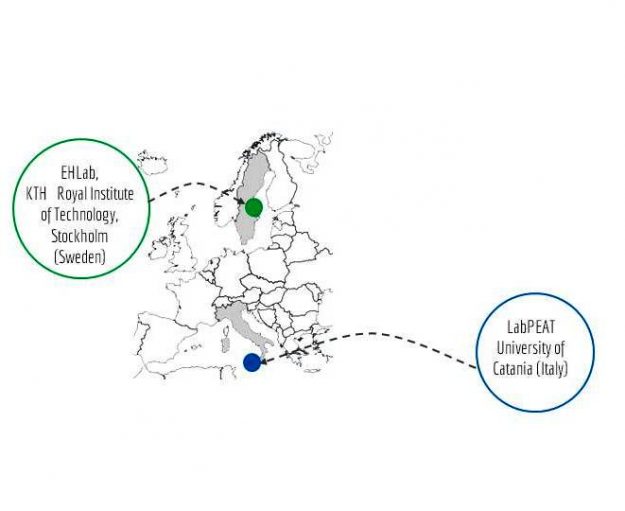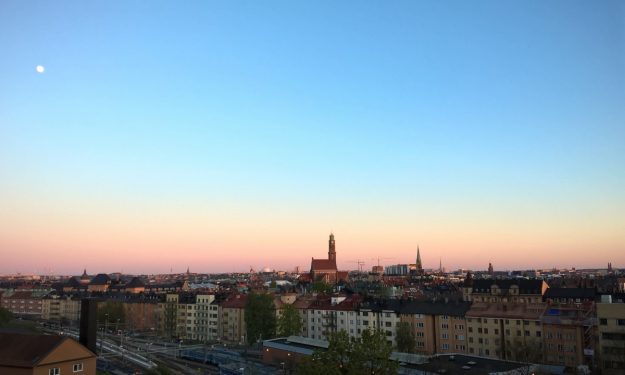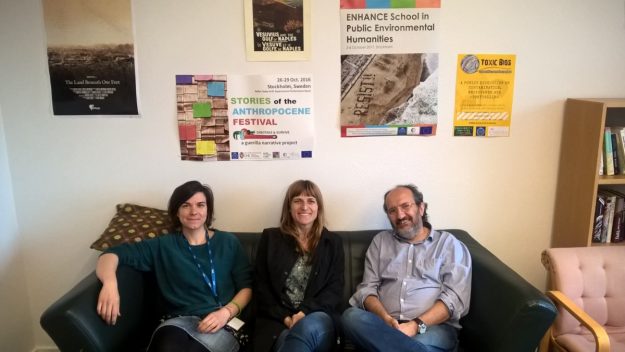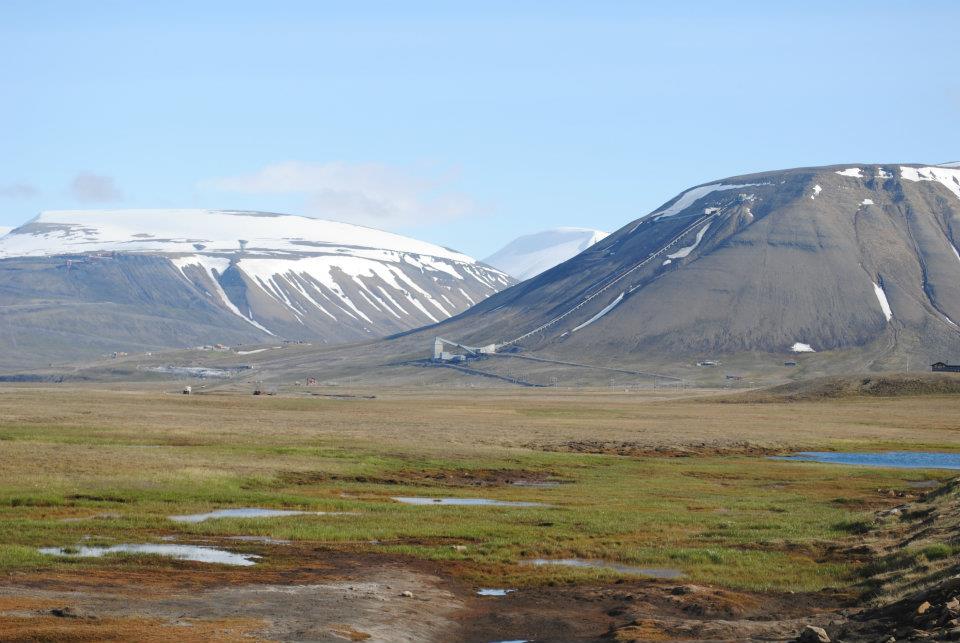by Elisa Privitera (Lizzy), C. M. Lerici Foundation Fellow
My story with Sweden started around two years ago. It was a scorching and sunny summer. I had just gotten my Masters Degree that explored the creation of a community laboratory that sought to regenerate a historical and neglected district in Catania—my hometown in Sicily—when my supervisor said to me, “What do you think about Sweden?”
“Sweden, hmmm…” I hesitated, trying to take time in order to dig into my memory and knowledge, to collect ideas for a right answer.
Waiting patiently, my supervisor prompted me again, “So?”
I sighed, “Actually, not too much. Why do you ask?”
Two years later, at the end of January 2019, I landed in the evening at Stockholm’s Skavsta Airport in order to accomplish about 6 months of research as a visiting scholar at the Environmental Humanities Lab at the Division of History of Science, Technology and Environment here at KTH. Oh yeah, I was in Sweden!
But why did I come here? Tracing back the story, during the two years in between my masters degree and my arrival, I continued to work and do fieldwork concerning environmental and urban planning. I collaborated with some grassroots associations, which furthered my interests in the processes of reactivation of derelict spaces. And I started a PhD program where I’ve continued to explore the link between environmental issues and urban planning as a member of LabPEAT– an action-research lab of ecological and environmental design. Working on my PhD, “Evaluation and mitigation of urban and land risks”—begun in 2018 at the Department of Civil Engineering and Architecture at the University of Catania—I began to investigate the issues of community empowerment with environmental risks and the planning and regeneration of derelict areas.

My thesis explores risky landscapes, such as all those post-industrial or in transition landscapes that have been deeply modified and contaminated due to the heavy human footprint. If the landscape can be conceived as the place of people and people’ point of view (Pizziolo and Micarelli, 2003), how can the local knowledge collected by the people’ stories influence the planning field? Or more generally, what can be the role of subaltern communities in the production of knowledge about risk in order to co-design neglected and contaminated areas? Starting from these research questions, my aim is to experiment an alternative approach to risk landscapes by investigating the issue of environmental risk from a qualitative and environmental justice point of view and by putting particular emphasis on storytelling. Since I believe that the industrial and contaminated areas represent a melting-pot of the inequalities as well as a prime example for debate on how to plan current and future risk landscapes, I have chosen to focus on Gela, a fishing village in the South of Sicily that has been converted into one of the main Italian petrochemical poles. In Gela, I had already started to collect stories about daily life from some inhabitants. But I understood that I still needed to deepen the theme of the potential role of the narrative.
That is why I came to the Environmental Humanities Lab (EHL) on a C. M. Lerici Foundation fellowship. Understanding the roles of narratives in order to tell the right story (Barca S., 2014) or to portray a more complex story of landscapes (Gravagno F., 2008) is an expertise of the EHL. It combines research, training, and outreach to tackle crucial societal challenges, such as climate justice, migrations, environmental justice, and rights to the city. The EHL has driven several projects on environmental justice over the years, such as Toxic Bios.
This public environmental humanities project has assisted my research through its aims to co-produce, gather, and make visible stories of contamination and resistance, by using the methodology of storytelling, as also explained in a published article. The collection of oral stories can be a useful tool for many purposes:
- for uncovering toxic narratives centered on structural environmental injustice;
- for co-producing knowledge;
- for increasing the empowerment and collective capabilities of local communities (community building);
- and for triggering an action-research path in contaminated territories in order to co-design a different future.
So, by having in mind the purpose of deepening the potential role of the toxic biographies in the planning of contaminated areas, I landed in the darkness at the airport of Skavsta, covered by layers of white snow during that January night. The day after my arrival I moved to live into one of the student dormitories on KTH Campus—a newly erected building with an amazing view on the cityscape of Stockholm. The following months have been an intense flurry of learning, experiences, and challenges!

Upon my arrival, I began a literature review about environmental justice, political ecology, and environmental history, as suggested by my KTH supervisor: Prof. Marco Armiero. Stockholm was so cold, with iced lakes and fascinating snowscapes sprinkled with nightlights in front of windows to face the darkness. February passed in a jiffy, and in March I started to attend a course for the Ph.D. candidates in “Theory and Method in Historical Research” and a course for master students in “Environmental History.” Both the courses have been challenging. In the first course, “Theory and Method in Historical Research,” I had the possibility to study and debate on many current issues, from Bruno Latour’s books to the epistemological research of feminist theory, from materiality to STS studies. The array of themes has been quite varied and helped me to frame and address my own research questions from time to time in a new way, by enriching certain points of view about it. Meanwhile, thanks to the “Environmental History” course, I investigated the historical connections between migration flows and environmental pull and push factors. These experiences gave me some insights on how to frame my topic as well.
Until then, I have collaborated with the EHL on two running projects. Also, I have collaborated and participated in the lab meetings that take place more or less once a week. On the 21st of March, I also had the opportunity to present the activities and research carried out by LabPEAT of Catania during one of these lab meetings. Over the months, I got fully involved in Division life, for instance, by attending the Higher Seminars in which other scholars come from everywhere about present on current research topics.

Also, frankly speaking, I have fallen in love with fika, an on-purpose-organized break with the aim of socialising among colleagues. The fika is sweetened by tea, coffee and a lot of sweets, typical from Sweden. Some of the main sweets are the “Princess cake,” the “kanelbullar” or “kardemummabulle”, and so on. In particular, the cinnamon bun can be considered the queen of Swedish cuisine! Thereby, in my opinion, among the key-words regarding Sweden, I would suggest FIKA! Between fika, readings, assignments and interesting discussions with colleagues, April arrived. It brought lighter hours, warmer weather, Easter and Walpurgis night, or Valborg. If the days of Easter have been characterised by the blooming of the trees at Kungsträdgården that attracted locals and tourists during several days, Valborg is one of these things about which I did not know about but that is a quite important event for Swedish society. In fact, it is a custom coming from northern Europe, and it consists of lighting bonfires in public spaces in order to celebrate the arrival of spring collectively. All throughout Sweden, there are bonfires with family and groups of friends who enjoy the flames. I got to enjoy Valborg from the seaside of Stockholm!
In the middle of May, the two courses ended. I started to draft a summary of the concepts learned about toxic autobiographies and environmental justice. In the meanwhile, nicer days came. When the sun arrives, it is a bursting event, a kind of explosion of joy and chilling out, and all Swedish (and not only!) people begin to scatter among the public places of the city: picnic on the parks, walks on the city, beers in terraces and gardens, events in the squares. A festive spirit rises. I started to stroll around the city in order to explore it. I visited Skansen park which gives lots of information about the history of Sweden and typical Nordic animals, some museums, such as the Nobel Prize Museum, and the park behind the KTH campus which is full of deer and forest animals.
At the beginning of June, I went back to Italy for a conference where I presented work I developed based on what I learned in the “Theory and Method in Historical Research” course. The title of the work is “Contaminated Entanglements,” and it will be soon part of a publication. “Contaminated Entanglements” concerns the complex set of connections between environmental components. Things, matters, bodies, humans and not, all are part of this entanglement. Especially, according to Stacy Alaimo (2010) in the contamination of the human and non- (more than) human bodies can be read the transcorporeality of the toxicity.
Another first output of this period of research at the EHL has been the paper titled “The Toxic Biographies and the “Small Data” from an Italian petrochemical town (Gela, Sicily)” that I have presented at the City Futures IV Conference in Dublin. This paper is a first and embryonic fruit of the collaborative work between the two research laboratories, LabPEAT and the EHL. This collaboration has brought us to experiment and propose an ecological and relational community design that uses toxic biographies as tools for converting the personal stories of life into collective knowledge. In fact, through the collection of stories a shift occurs from an individual tragedy to a self-aware community which can embark upon the quest for justice. By doing so, toxic auto-biographies become also a way to re-politicize the embodied experience of injustice. Once a community—formed as the result of a struggle—becomes aware of the diffused injustices, an ecological community design path can be triggered.
As July arrived, the end of my experience drew near, and I returned home. A second intense year of Ph.D. is now in front of me. The future goals for this year will be to continue to carry out a full-immersion and fieldwork in Gela (Sicily). More and more auto-biographies will be collected, and I will try to trigger an action-research path by engaging inhabitants and grassroots movements in order to map the risk landscapes as they are perceived by citizens and also in order to co-design alternative futures for this contaminated area. For sure I will have to deal with doubts, readings, editing and so on, but I am also optimistic about the decisive turning points. I do believe that future meetings with some of the scholars I have met at this division during these past few months will be fruitful and inspiring for my ongoing research!
That’s why I am really looking forward to coming back to Sweden one day again, and at the Division of History of Science, Technology and Environment of the KTH Royal Institute of Technology in particular!
Tack and see you soon!

